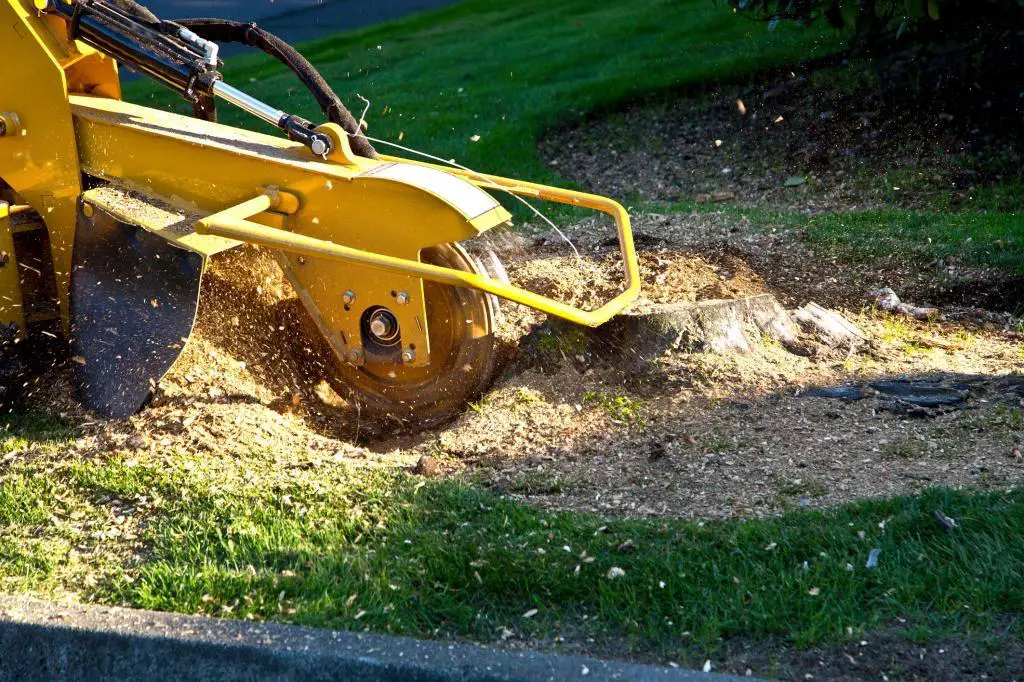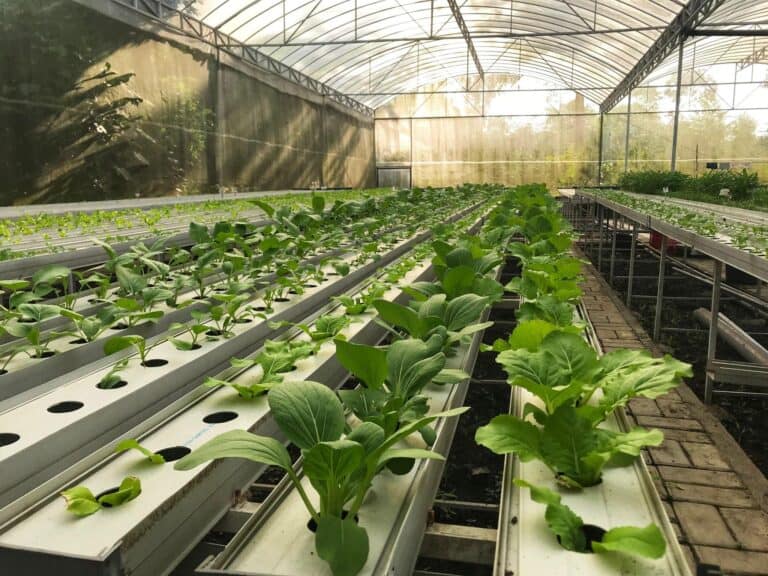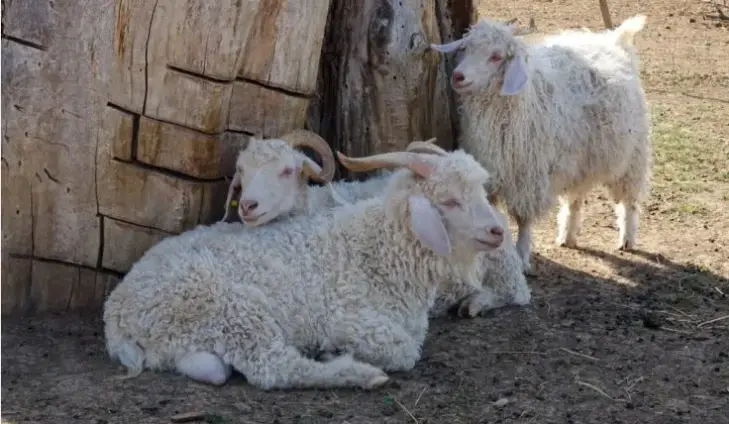Can a Forestry Mulcher Effectively Grind Stumps? Efficient and Eco-Friendly

When it comes to clearing land for development, agriculture, or even just improving your backyard, removing trees and stumps can be a daunting task. The traditional method of manually digging out stumps can be time-consuming, expensive, and leave you with a big hole in the ground.
This is where forestry mulchers come in. But can these powerful machines effectively grind stumps?
Forestry mulchers have gained popularity in recent years as a fast and efficient way to clear large areas of trees and brush. They work by using a spinning drum equipped with sharp teeth to grind up trees and other vegetation into small pieces. But can they handle the tough and often stubborn stumps that are left behind after the trees have been felled?
The answer is yes; forestry mulchers can effectively grind stumps. With their powerful engines and cutting teeth designed to tear through even the toughest of wood, forestry mulchers can easily grind stumps down to ground level.
Not only does this eliminate the need for manual removal of stumps, but it also creates a nutrient-rich mulch that can be used for landscaping or gardening purposes.
In this article, we will dive deeper into the capabilities of forestry mulchers when it comes to stump grinding, including the types of stumps they can handle, the benefits of using a mulcher for stump grinding. You also will get some tips for choosing the right mulcher for your needs.
So, if you’ve been wondering whether a forestry mulcher can effectively grind stumps, read on to find out more.
Understanding the Basics of Forestry Mulching and Stump Grinding
Mulching trees and grinding down stumps are two common ways to clear land that are often used interchangeably. However, you need to understand the differences between these methods to make informed decisions about which is best for your property.
Forestry mulching is a technique that involves using a machine called a forestry mulcher to clear land by shredding trees, brush, and other vegetation into small pieces. The mulcher grinds the material down to the soil, creating a layer of mulch that can be used for erosion control, soil improvement, and weed suppression.
Stump grinding, on the other hand, is a technique that involves using a machine called a stump grinder to remove the stump and roots of a tree after it has been cut down. The stump grinder uses a spinning disc with teeth to grind the stump down into small pieces, which can then be easily removed from the ground.
Stump grinding is often used when a tree has been removed and the owner wants to completely get rid of the stump to make way for new landscaping or construction projects.
There are pros and cons of forestry mulching and stump grinding, both have their own unique benefits and drawbacks. Forestry mulching is an eco-friendly alternative to traditional land clearing methods because it allows for the recycling of vegetation, which reduces the amount of waste that is sent to landfills.
However, because the mulcher grinds everything down to the soil, it may not be the best option for areas with delicate ecosystems or for properties that require large trees for shade or aesthetic purposes.
Stump grinding, on the other hand, is a more targeted method that only gets rid of a tree’s stump and roots, leaving the plants around it alone. But, especially for bigger stumps, stump grinding can take more time and cost more than forestry mulching.
The Benefits of Mulching Stumps After Tree Removal
After removing a tree, there are several ways to deal with the remaining stump. Some people opt to have the stump ground down or removed entirely, while others choose to leave the stump as is. But mulching the stump is an often-overlooked option that can be good for your property in several ways.
Here are some of the benefits of mulching stumps after tree removal:
- Improves soil quality: Mulching a stump can improve soil quality by adding organic matter and nutrients to the soil. As the stump breaks down over time, it releases valuable nutrients that can help support the growth of nearby plants.
- Enhances landscaping: A stump can be an eyesore on an otherwise well-maintained property. By mulching the stump, you can create a natural-looking landscape feature that blends in with the surrounding vegetation.
- Reduces erosion: Mulching a stump can help prevent soil erosion by providing a protective layer over the soil. This is especially important on steep slopes or in areas prone to heavy rainfall.
- Increases sustainability: Mulching a stump is a sustainable option for disposing of tree waste. Rather than sending the stump to a landfill or using fossil fuels to remove it, you can use the stump to improve the health of your property.
Now that we have explored the benefits of mulching stumps, let’s consider different mulching methods to achieve these benefits.
- Manual mulching: Manual mulching involves breaking down the stump into small pieces using hand tools such as a chainsaw or ax. This method is labor-intensive but can be effective for smaller stumps.
- Mechanical mulching: Mechanical mulching involves using a machine such as a forestry mulcher or stump grinder to break down the stump. This method is faster than manual mulching but may be less precise.
- Chemical mulching: Chemical mulching involves applying a chemical solution to the stump to accelerate its decay. This method can take several months to be effective and may require multiple applications.
- Natural mulching: Natural mulching involves leaving the stump in place and allowing it to decay naturally over time. This method can take several years but is the most environmentally friendly option.
Can a Forestry Mulcher be Used for Tree Removal?
Getting rid of trees is a common thing that property owners do to keep their land safe and looking nice. One method of tree removal beside cutting down trees that has gained popularity in recent years is using a forestry mulcher. But can a forestry mulcher be used for tree removal?
The answer is yes, a forestry mulcher can be used for tree removal, but it is important to understand the differences between using a forestry mulcher and other tree removal methods.
Traditional ways to get rid of trees, like cutting them down by hand, grinding the stump, and digging up the roots, can take a lot of time and work. In contrast, a forestry mulcher can quickly grind a tree into small pieces that can be left on-site as mulch.
Using a forestry mulcher for tree removal has several advantages. For one, it is a more environmentally friendly option than traditional tree removal methods, as it generates less waste and can even improve soil quality by leaving behind nutrient-rich mulch. Additionally, a forestry mulcher can handle trees of all sizes and types, making it a versatile option for property owners.
However, there are also some downsides to using a forestry mulcher for tree removal. For example, a forestry mulcher may not be the best option for removing trees that are close to buildings or other structures, as the debris generated during the mulching process can cause damage.
Additionally, forestry mulchers may not be able to completely remove the tree stump, which can be a problem if you want to replant in the same area.
If you decide to use a forestry mulcher for tree removal, here are some tips to ensure a successful and safe process:
- Assess the tree’s location and surrounding area for any obstacles that may impede the mulching process or cause damage.
- Wear appropriate safety gear, such as protective clothing, safety glasses, and ear protection.
- Begin mulching the tree from the top down, making sure to avoid any large branches or limbs that could cause the machine to stall or become damaged.
- Use a grapple or other attachment to move the debris to the side as needed to avoid creating a large pile.
- After mulching the tree, inspect the area for any remaining debris or large root systems that need to be removed manually.
- Properly dispose of any debris that cannot be mulched, such as large branches or logs.
How Does a Forestry Mulcher Work to Grind Stumps?

A forestry mulcher is a powerful machine designed to grind up trees, brush, and other vegetation into small pieces. It is commonly used for land clearing and vegetation management and can also be used to grind stumps.
When it comes to stump grinding, a forestry mulcher works by using a spinning rotor with teeth that grinds the stump and roots into small pieces. The rotor is positioned at the end of a large arm, which is mounted to a tracked or wheeled machine that moves through the vegetation.
The teeth on the rotor are typically made of high-strength steel and are designed to shred through tough materials, such as tree trunks and roots. As the rotor spins, it grinds the stump into small pieces, which are then pushed into the soil to create mulch.
Some forestry mulchers also have a second chamber for grinding that makes the mulch even smaller. This mulch can be used for many things, like stopping erosion, improving the soil, and decorating.
To ensure efficient stump grinding with a forestry mulcher, you need to choose the right machine for the job. Things to think about are the size and hardness of the stump, the type of soil and plants in the area, and what you want to do with the mulch in the end.
Also, it’s important to use the machine safely, which might require training and the right gear. Operators of forestry mulchers should be aware of the possible risks, such as flying debris and uneven ground, and take steps to reduce these risks.
Factors to Consider When Choosing a Forestry Mulcher for Stump Grinding
Choosing the right forestry mulcher for grinding stumps can be hard, especially if you don’t know much about the tools. When choosing a mulcher for this job, you should think about the size and type of stumps you will be grinding, the terrain of the land, and the machine’s power source, among other things.
One of the most important factors to consider when choosing a forestry mulcher for stump grinding is the size and type of stumps you will be working with. Some forestry mulchers are better suited for grinding small stumps, while others are designed to handle larger stumps and tree roots.
Some mulchers may be better at grinding hard woods like oak and hickory, while others may be better at grinding soft woods like pine and cedar.
The land’s shape is another important thing to think about when choosing a forestry mulcher for grinding stumps. If you are going to be working on steep or uneven ground, you may need a machine with a special undercarriage to make it more stable and easy to move. If you will be working in a wet or muddy area, you might need a machine with larger tracks or tires to help it get a better grip.
Finally, the power source of the forestry mulcher is also an important factor to consider. Gasoline, diesel, or electricity are just a few of the fuel types that can power forestry mulchers.
Machines that run on gasoline are usually more portable and easier to keep up, while machines that run on diesel are usually more powerful and better suited for heavy-duty tasks.
Electric-powered machines are a more environmentally friendly option but may not have the same level of power as gasoline- or diesel-powered machines.






